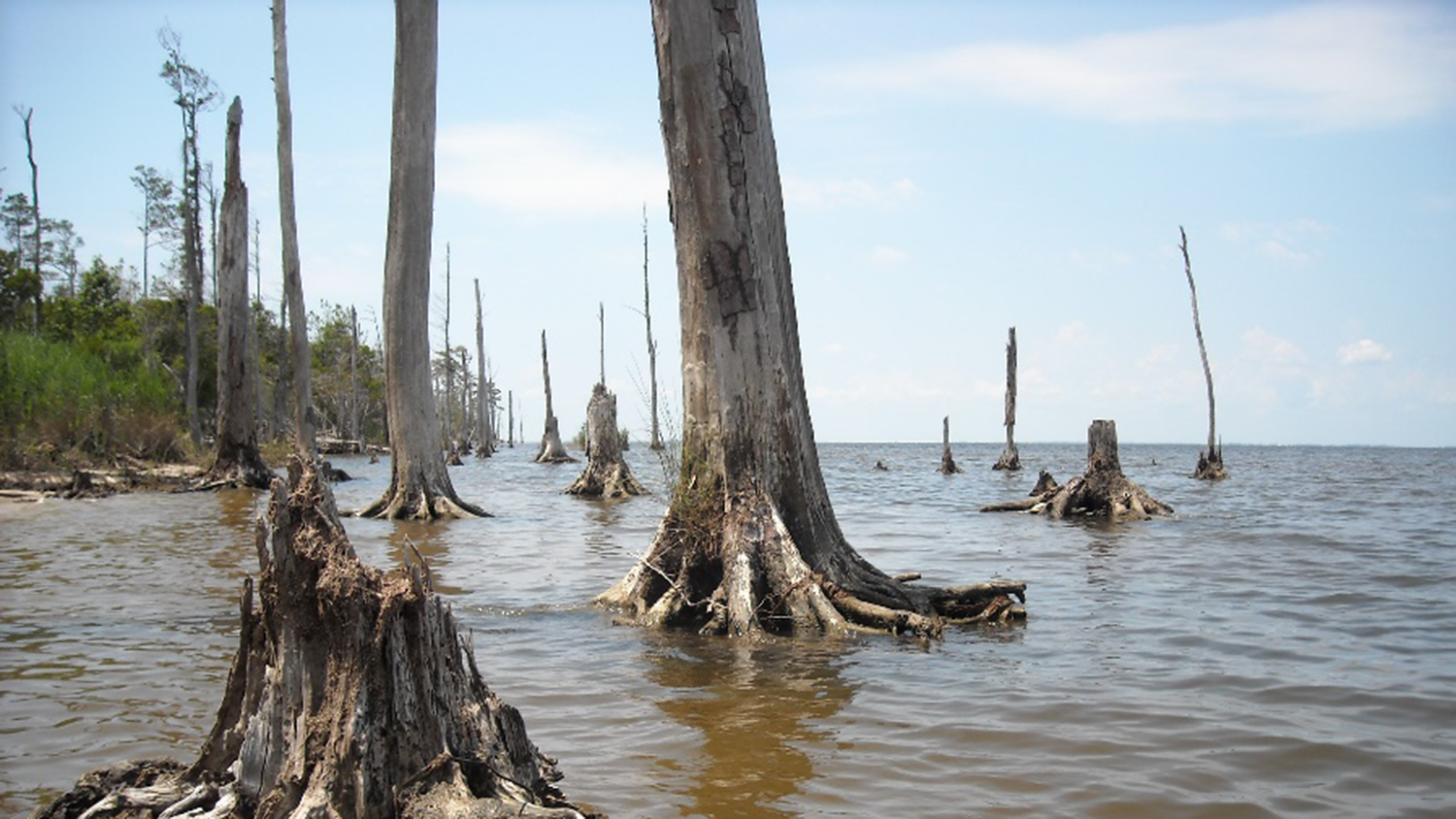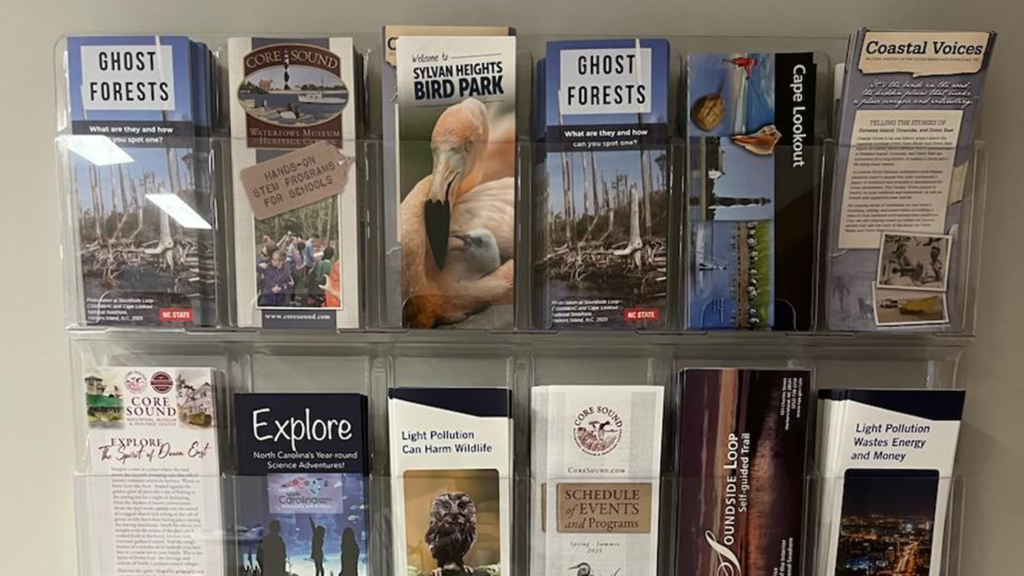Natural Resources Students Raise Awareness of Ghost Forests

A project led by NC State students is helping to inform the state’s coastal communities about the emergence and spread of ghost forests — stands of dead trees that occur when sea-level rise or flooding repeatedly injects saltwater into upland forests or wetlands.
Four students — Andrew Barfield, Rachel DeChicio, Arden Lumpkin and Jordan Strickland, who each graduated this year with bachelor’s degrees in environmental sciences — recently published educational materials about ghost forests as part of a capstone project for ES 400: Analysis of Environmental Issues.
The materials include a digital slideshow, “Ghost Forest: The Dead Trees Down East,” and a printed brochure, “Ghost Forests: What are they and how can you spot one?” Each of the materials is available to the public, with the brochure now being distributed to visitors at the Core Sound Waterfowl Museum and Heritage Center and Cape Lookout National Seashore.
Down East refers to a group of communities east of Beaufort in Cateret County and is one area where ghost forests are increasingly prevalent. However, not all residents understand the significance of ghost forests, according to Erin Seekamp, the Goodnight Distinguished Professor in Coastal Resilience and Sustainability and director of the NC State Coastal Resilience and Sustainability Initiative.
Seekamp has been working with the Down East community since 2015 on research related to climate adaptation planning at Cape Lookout National Seashore, which has fostered strong and sustained relationships with Karen Ampsacher, director of the Core Sound Waterfowl Museum and Heritage Center, and Jeff West, superintendent of Cape Lookout National Seashore.

Following a conversation with Erin Sills, head of the Department of Forestry and Environmental Resources, about how the Coastal Resilience and Sustainability Initiative might contribute to the ES 400 course, Seekamp recalled that Ampsacher had begun talking about how she was starting to consider a museum exhibit on ghost forests.
Seekamp initiated conversations with Ampsacher, West and the course instruction team — Marcelo Ardón, an associate professor in the Department of Forestry and Environmental Resources, who is tracking the spread of ghost forests, and Michelle Jewell, the chief science communicator with the Department of Applied Ecology — to consider a science communication project around ghost forests.
“Marcelo’s work on ghost forests and the use of Chronolog stations to engage visitors immediately came to mind. Everyone was onboard with the idea for an ES 400 project to set up a Chronolog site and develop some science communication content for the museum and, once a group of students selected the project for their capstone course, the project started rolling,” Seekamp said.
Ardón has either installed or helped to coordinate the installation of nearly 20 Chronolog stations at various state parks and wildlife refuges along the coast of North Carolina since 2021 as part of a research project to document the spread of ghost forests, known as the “Sentinels of the Sounds.” He recently installed a station along the Soundside Loop Trail behind Cape Lookout National Seashore’s visitor center.

When visiting the Chronolog stations, people can use a cell phone or tablet to snap a photo of the surrounding environment and then upload it to an online platform. The photo is then added to a time-lapse video of that location. As part of the ES 400 project, the students analyzed photos from the station at Cape Lookout National Seashore and incorporated promotional language about the station in the slideshow and brochure to promote public engagement.
“Ghost forests are not only an indication of how sea level rise and coastal erosion has affected the coast of North Carolina, but they also foreshadow how our coastal forests could look as time goes on,” Strickland said. “Spreading this information to the local public is important because it gives them an opportunity to see how the environment is changing and being affected around them.”
He added that one of his favorite aspects of participating in the project was learning how to effectively design science communication products for the general public. “There are a lot of variables that go into designing these products, and having to design our own made me realize how important science communication is and why it is crucial in the field of environmental science.”
Seekamp said the project will likely be expanded upon in future semesters so that students can not only help to develop content about ghost forests for the exhibit at the Core Sound Waterfowl Museum and Heritage Center but also co-create curriculums with local schools to promote intergenerational learning opportunities, with the goal of a classroom “adopting” the Chronolog station so that students can visit it with an adult to discuss their observations.
- Categories:


